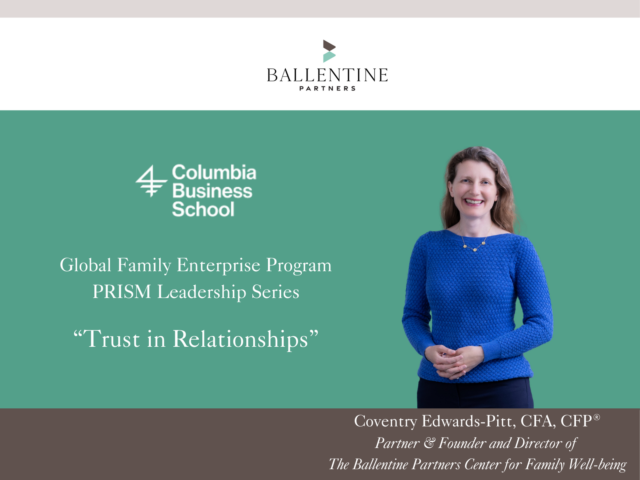As published in The Wall Street Journal, December 31, 2009
Retiree Plan Must Fit Client’s Vision
by Michaela Cavallaro
Tom Bullitt’s newly retired client wanted to endow a chair at the local hospital where he had been employed for years, create sufficient income for his retirement and organize his estate, half of which was to go to charity and the other half of which would be earmarked for extended family members.
“A charitable remainder trust typically works well in situations like this one,” says Bullitt, who runs Mill Street Investment Management, a division of multifamily office Ballentine Finn & Company. “But this client wanted the gift to be made right away, and didn’t care too much about getting the full tax benefit.”
To further complicate matters, the client is a dual-country taxpayer who has investment accounts abroad in addition to his U.S. retirement-plan assets and taxable accounts, some of which contained highly appreciated securities. Along with his foreign investments, the man has a foreign accountant and estate planner, who–along with their domestic counterparts–needed to be involved in any plan Bullitt proffered.
After consulting the other advisers, Bullitt proposed that the client donate appreciated securities to the hospital to endow the chair. For retirement income, he would make withdrawals from a tax-deferred annuity he held. The withdrawals would be taxed as income until he exhausted the appreciated portion of the annuity; during that period, he could use the deduction for charitable contributions to offset the income.
When the client reached age 70 ½ or exhausted the annuity, he would begin taking withdrawals from the rollover IRA containing the assets from his workplace retirement accounts, which would be taxed at a higher rate than the annuity withdrawals.
For four years the client proceeded as directed. Earlier this year, however, Bullitt saw an opportunity to make use of the remaining charitable deduction carry-forwards, which were set to expire in 2009. Bullitt proposed converting a large portion of the client’s traditional IRA into a Roth. Since the U.S. government waived required minimum withdrawals this year, the client was able to convert enough of the IRA to stay under the $100,000 income threshold for Roth conversions. [If he’d had to take required minimum deductions, his income would have exceeded the threshold.]
The man will have to pay taxes on the conversion, but his ability to use the remaining charitable deduction means his rate will be considerably lower — approximately 10% as opposed to the roughly 30% rate he’ll pay going forward, according to Bullitt.
Bullitt says his client was somewhat wary of the whole idea to start, but he eventually came around. The key to that, Bullitt says, was engaging all four of his other advisers. “You’d think they would be talking to each other all the time, but that wasn’t the case,” he says. “We really were the focal point in those conversations, and the coordination of their efforts is still a big responsibility.”
Once the advisers were on board, Bullitt had to convince the IRA’s custodian to accept a complex beneficiary designation statement drafted by an overseas attorney. The task was difficult, but he ultimately succeeded.
While the plan posed some challenges, Bullitt is confident it met, and continues to meet, his client’s requirements. “What you think when you first hear the facts of a case is one thing, but the scenario can turn out to be very different once you get into the details,” he says. “This situation was a good reminder of that.”
Ballentine caters to families with investment portfolios worth at least $20 million from offices in Waltham, Mass., and Wolfeboro, N.H. It established Mill Street in September to advise families with investment portfolios of $3 million to $20 million.
Click here to read the article on wsj.com.




